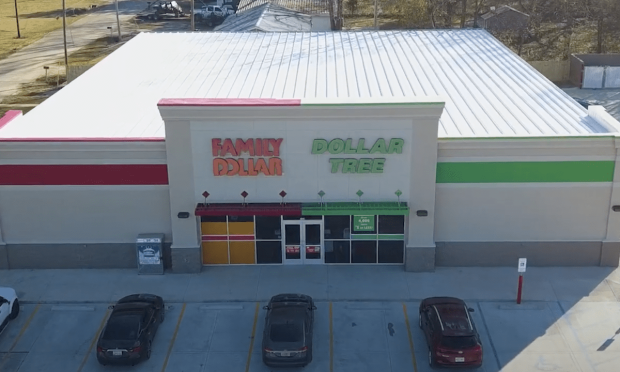Dollar Tree To Ramp Up Combo Stores And New Locations In Bid To Boost Sales Growth

Dollar Tree, the country’s second-largest operator of discount stores, said Wednesday (March 3) that it is accelerating store growth and renovations this year as it looks to boost sales and profits at its more than 15,000 locations.
In announcing its fourth-quarter and full-year financial results, the Virginia-based retailer said it plans to renovate 1,250 existing locations this year while adding an additional 600 new stores, including more of its “combo stores” which put its Dollar Tree and Family Dollar brands under one roof.
“Compared to other Family Dollar stores located in small markets, these Combination Stores are delivering a same-store sales lift of greater than 20 percent on average,” the company’s statement said, adding that the tandem locations are “more productive, deliver higher gross margins and are better at leveraging store expenses.”
Officially, Dollar Tree said its Q4 diluted earnings per share rose 310 percent to $2.13 on consolidated sales of $6.7 billion for the three months ending Jan. 30. The company said its combined same-store sales rose 4.9 percent, with sales at Family Dollar stores rising 8.1 percent and its Dollar Tree brand posting a 2.4 percent increase in comparable store sales.
Six-Year Anniversary
As the two discount brands approach the six-year anniversary of Dollar Tree’s $8.5 billion acquisition of Family Dollar in 2015, they continue to face myriad challenges and costs involved in running a vast network of stores, many of which are based in small, economically challenged, rural communities.
That said, the company reported it improved its gross profit margin last quarter to 31.8 percent from 31 percent a year ago, due to a better sales mix, reduced markdowns, and improved occupancy costs, as its freight and distribution costs went up.
As a result, Dollar Tree said its overall selling, general and administrative expenses were roughly flat at 21.7 percent of net sales, as the company spent over $17 million on COVID-19 expenses including store cleaning and PPE supplies for its 56,000 employees.
The company also said it opened 124 new stores, closed 45 locations and ended the year with more than 125 million square feet of retail selling space.
Outlook On Locations But Not Sales
Like many of its peers that operate nationwide retail chains, Dollar Tree also said it was not updating its sales and earnings outlook due to the “continued volatility and uncertainty related to the COVID-19 pandemic and other macroeconomic factors.”
However, one thing the company can control is the pace of its expansion and renovations, which it said will consist of 400 new Dollar Tree stores and 200 new Family Dollar stores, which will be a mix of combo stores and redesigned stores the company refers to as the “H2” format that include a small standalone section of $1 items from Dollar Tree, versus the 50-50 split of a combo store.
“The combination of Dollar Tree and Family Dollar affords the Company a transformational opportunity to serve more customers in all types of markets,” the statement said, noting the pairing of Family Dollar’s value and assortment which ranges from groceries to household items with Dollar Tree’s “thrill of the hunt” fixed-price format that’s heavy on seasonal goods and craft items.
Big News For Small Towns
At a time when investment in rural communities is shrinking across the nation, the addition of any new business and job creation is much welcomed news. It also brings increased convenience to local residents who don’t need to drive to larger retail centers in neighboring towns. Dollar Tree also has a delivery service partnership with Instacart.
“The new strategic store format [is] targeted for small towns and rural communities with populations of 3,000 to 4,000” the statement said. “These are markets where the Company would traditionally not open a Dollar Tree store alone.”
The discount retail space will next hear from segment leader Dollar General, which runs about 17,000 locations, does roughly 30 percent more sales and has a $45 billion market value which is currently about twice as large as Dollar Tree.
